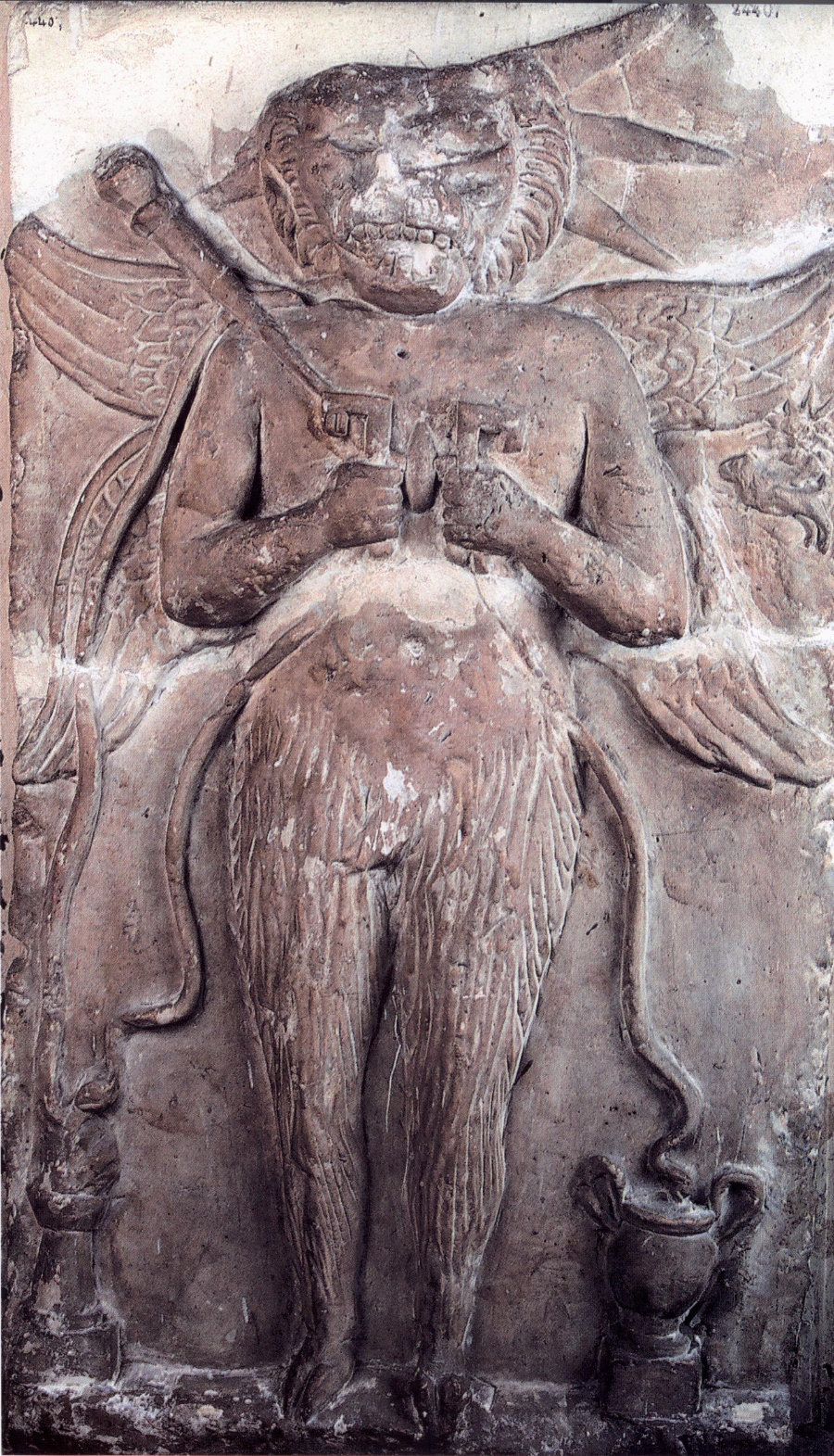Monumentum
Aion of Oxyrhynchus
According to Pettazzoni Aion in general finds its iconographical origin in Egypt. Mithras must have been worshipped in Egypt in the third century B.C.
The New Mithraeum
21 May 2021
Updated on Jan 2022
The full article is reserved for our members.
Log in or create a free account to access the entire site.
Breccia, Cronos mitriaco, 257ff with Pl. (see fig. 36) ;D. Levi in Hesperia XII, 1944, 275 fig. 5; Pettazzoni in AntC. XVIII, 1949, 271 and Pl. II, 4.
Standing Aion with four wings, one pair pointing upwards, the other pair pointing downwards. The god is represented as partly human partly animal. Around the lion's head a nimbus with radiate crown, only four of which are visible owing to damage. Bare
F…


